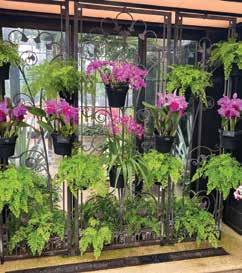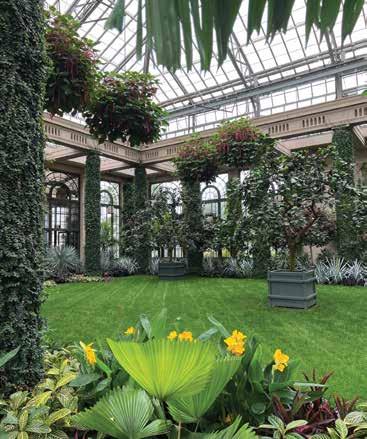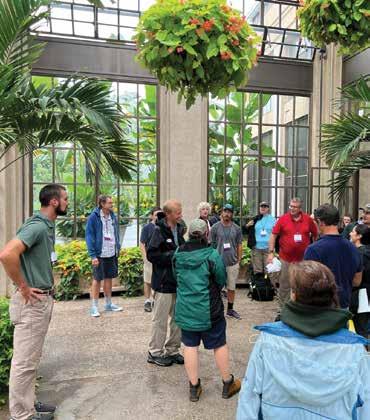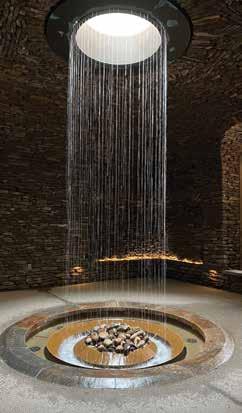
3 minute read
MEMBER EVENT RECAP E. Kelly Finney
Nursery Field Day at Longwood Gardens Sells Out!
The long-awaited nursery field day, hosted by Longwood Gardens, first scheduled for summer 2020, then moved to summer 2021, convened on September 7, 2022. And according to those in attendance, it was worth the wait. Speaking of attendance, unfortunately we had to cap the number of attendees and create a waitlist to keep the tours and educational stations manageable. We are used to having waitlists for MANTS but not for a field day. The day began with a presentation of the history of Longwood Gardens which was hundreds of years in the making, becoming official in 1906 thanks to Pierre S. du Pont. If you wish to learn more about the history, there is longwoodgardens.org/history, but the best source, like so many things in life, is visiting in-person. The remainder of the day was spent
Advertisement

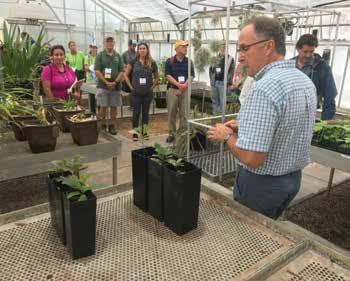
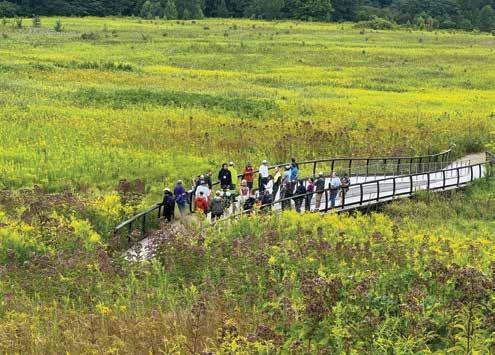
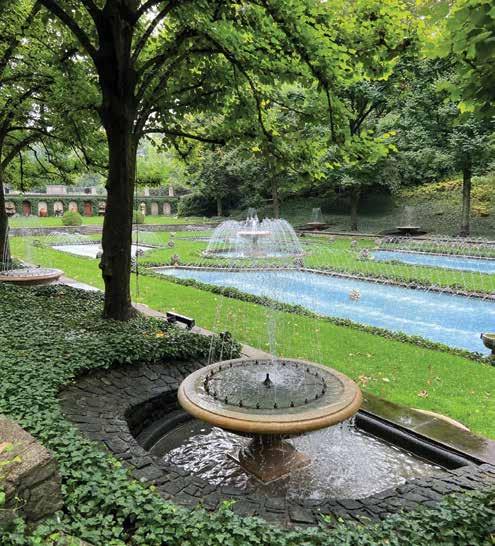
PAGE 34 TOP FAR LEFT
Longwood’s famous dancing fountains in groups touring the Research and Production Greenhouse, taking a Conservatory Pest Walk, and being treated to a Land Stewardship and Ecology talk. The Research and Conservation team focuses on finding and evaluating new plants, improving plant characteristics through breeding efforts and cultural techniques, and enhancing the sustainability of horticulture practices. To accomplish this, they are divided into four divisions: Conservation Horticulture & Collections, Land Stewardship and Ecology, Agriculture, Soils and Compost, and Floriculture Production. In the Production Greenhouses Longwood grows 1,300 types of plants each year for seasonal displays in the Conservatory and outdoor gardens. The newest production greenhouse accommodates a variety of plant materials, growing methods, and environments and greatly increases their level of environmental control, automation, and overall sustainability. It features 17 distinct growing zones which allows them to attend to each plant type’s individual needs. The Conservatory Pest Walk covered two primary areas. First was an immersive walk-through Longwood’s Conservatory spaces touching on various interiorscape pests including mealybugs, spider mites and thrips. This tour touched on Longwood’s comprehensive IPM philosophy which includes custom management plans for specific pests and incoming invasives, as well as cultural and biological control methods for (continued on next page)
(continued from last page) landscape, conservatory, and greenhouse environments. Despite some afternoon rain, the second part of the walk was outside, and covered several topics including a discussion about outdoor pests and diseases including boxwood blight, hemlock wooly adelgid, and spotted lanternfly. The Land Stewardship and Ecology Talk provided an overview of how Longwood manages their different eco systems and varying landscapes. Over 700 of Longwood’s 1100 acre is comprised of natural lands. They have a “Soil to Sky Management Plan,” to help manage their varying landscapes using science-based principles, practices, and decisions and to help improve eco system resilience and improve biodiversity. This included a look at their invasive plant management strategies and stewardship of their natural ecosystems to help develop and maintain suitable habitats for wildlife.
We are most appreciative to Jonathan Waple, Rachel Schnaitman, and all those on the Longwood Staff, twelve in total, who helped us plan, organize and conduct this event. And what is an MNLGA event without the help and support from the University of Maryland Extension; we so appreciate this continued partnership. And finally, thank you to all our annual Wye Oak sponsors, Angelica, Babikow, Bloom, Cavano’s, Farm Credit, The HC Companies, Jerry D., and The Perennial Farm as well as our annual Black-Eyed Susan sponsors, The Soulful Gardener and Gowan Turf and Ornamental. Your continued support means so much to the successful implementation of our events and programs. Visit mnlga.org to learn about upcoming events including the annual Breakfast, MANTS, and Chesapeake Green to mention a few. A
